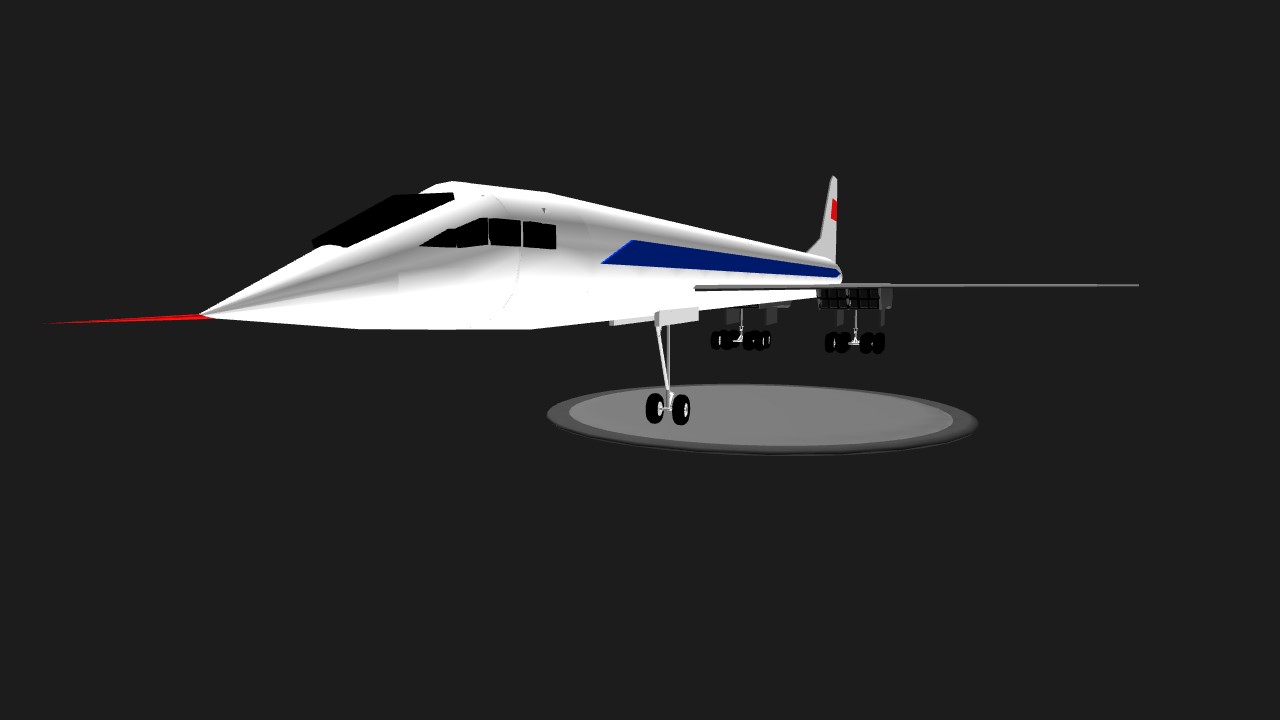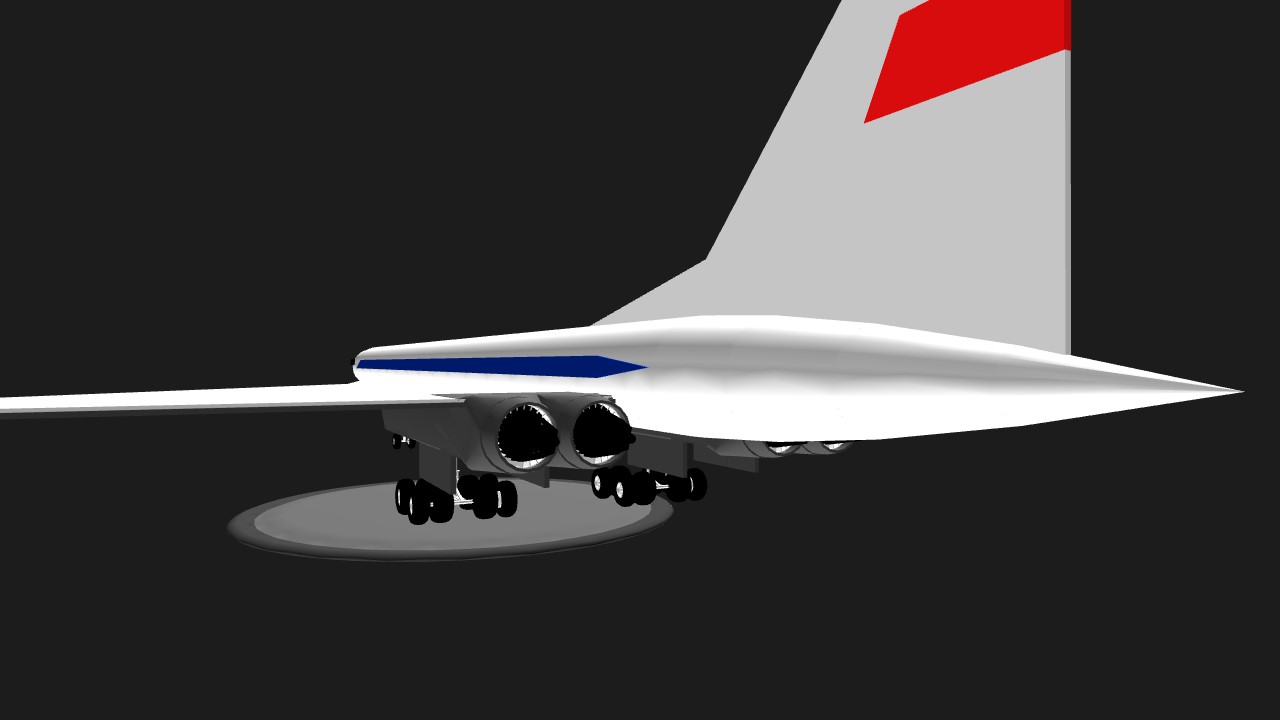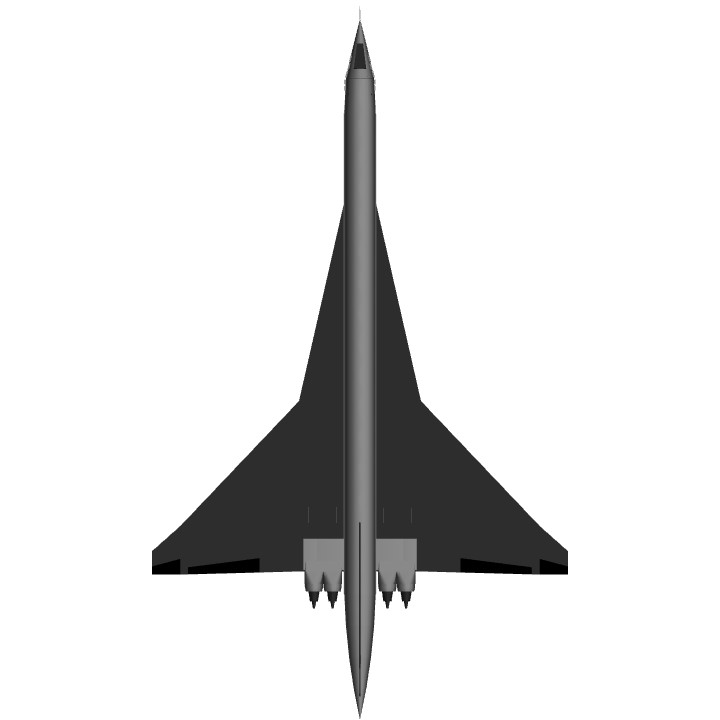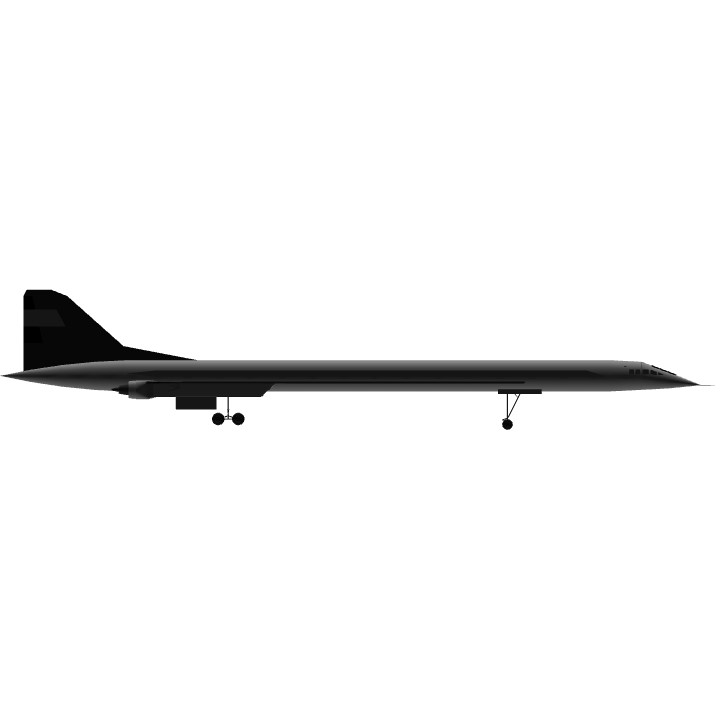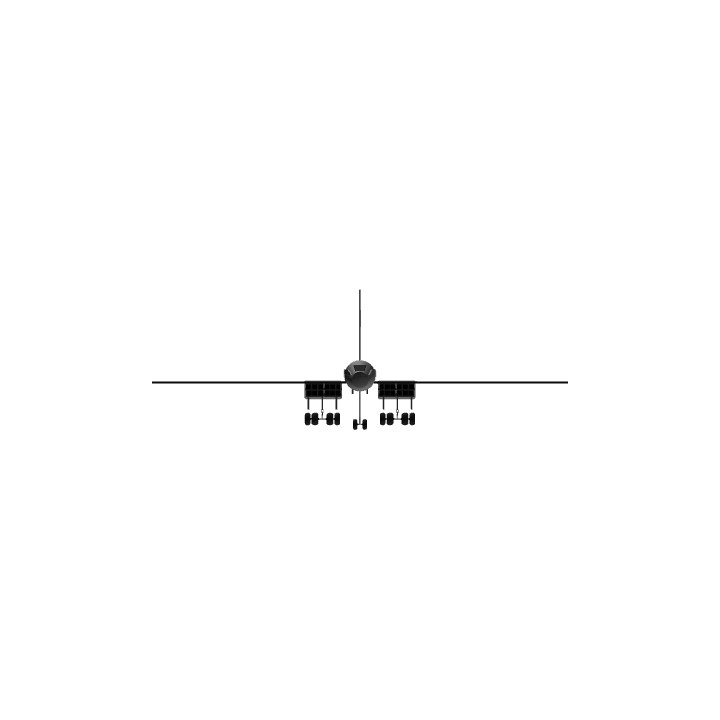Dear ladies and gentleman!
Welcome on board the fastest passenger plane ever made - Tupolev Tu-144 "Charger"!It's faster, bigger and chipper than "Concorde" (I also love "Concorde", but in the truth, Tu-144 was the first supersonic, It made its first flight two months before "Concorde", but, sadly, Tu-144 It has been so successfully like "Concorde").
For flight (must read!):
-!Landing gear system! After take off pull the "Landing gear" button, after than the gears will be retract, act. group 1 to close the covers. Before landing DON'T de-act. group 1!!!
-Furious - act. groups 2 and 3
-To use droop-nose (and retractable canards) use VTOL (ONLY DOWN!!!)
-Speed (with furious 2 and 3) is about 1500mph
-sale 1:1
About Tu-144:
The Tupolev Tu-144 (NATO reporting name "Charger") is a retired jet airliner, which was the world's first commercial supersonic transportaircraft (SST). It is one of only two SSTs to enter commercial service, the other being the Anglo-French Concorde. The design was constructed in the Soviet Union under the direction of the Tupolev design bureau, headed by Alexei Tupolev. Throughout its 55-flight operational history in passenger service, the Tu-144 flew at an average service altitude of 16,000 metres (52,000 ft) and cruised at a speed of around 2,000 kilometres per hour (1,200 mph).The prototype first flew on 31 December 1968 near Moscow, two months before the first flight of Concorde. The Tu-144 first went supersonic on 5 June 1969, and on 26 May 1970 became the first commercial transport to exceed Mach 2. A Tu-144 crashed in 1973 at the Paris Air Show, delaying its further development. The aircraft was introduced into passenger service on 1 November 1977, almost two years after Concorde, because of budget restrictions. In May 1978, another Tu-144 (an improved version, named Tu-144D) crashed in a test flight while being delivered, and the passenger fleet was permanently grounded after only 55 scheduled flights. The aircraft remained in use as a cargo aircraft until 1983, by which point a total of 102 commercial less
Specifications
General Characteristics
- Created On iOS
- Wingspan 108.8ft (33.2m)
- Length 188.9ft (57.6m)
- Height 36.5ft (11.1m)
- Empty Weight 83,365lbs (37,813kg)
- Loaded Weight 207,071lbs (93,926kg)
Performance
- Power/Weight Ratio 1.953
- Wing Loading 26.2lbs/ft2 (127.9kg/m2)
- Wing Area 7,901.9ft2 (734.1m2)
- Drag Points 28122
Parts
- Number of Parts 315
- Control Surfaces 9
- Performance Cost 1,854

